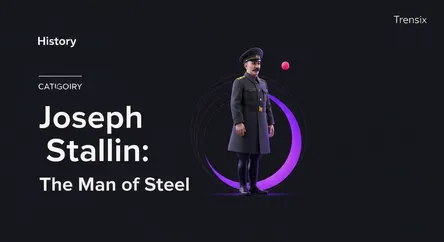History
Joseph Stalin: The Man of Steel

An overview of Joseph Stalin, the Soviet dictator who transformed the USSR into a superpower through industrialization and immense brutality.
What is it?
Joseph Stalin, born Ioseb Jughashvili, was the dictator of the Union of Soviet Socialist Republics (USSR) from 1929 to 1953. After Vladimir Lenin's death in 1924, Stalin outmaneuvered rivals to gain control of the Communist Party, eventually becoming an absolute ruler. His rule was defined by the goal of transforming the USSR from a peasant society into an industrial and military superpower. This was pursued through a series of Five-Year Plans for rapid industrialization and the forced collectivization of agriculture, all under a totalitarian government he controlled completely.
Why is it trending?
Stalin remains one of the most significant and controversial figures of the 20th century. His role as the Soviet leader during World War II was instrumental in the defeat of Nazi Germany, which led to the USSR emerging as a global superpower alongside the United States. This victory reshaped the post-war world and initiated the Cold War. His legacy is deeply contested; he is viewed as both a victorious wartime leader and a ruthless tyrant responsible for mass death and suffering, making him a perennial subject of historical debate and analysis.
How does it affect people?
Stalin's policies had a catastrophic impact on the Soviet population. His forced collectivization of farms led to widespread famine, resulting in millions of deaths. He ruled by terror, instituting the "Great Purge," a campaign of political repression where millions of perceived enemies were executed or sent to the Gulag system of forced labor camps. He suppressed all dissent, encouraged citizens to spy on one another, and built a powerful cult of personality. His regime destroyed individual freedoms and was responsible for the deaths of an estimated 20 million of his own people.